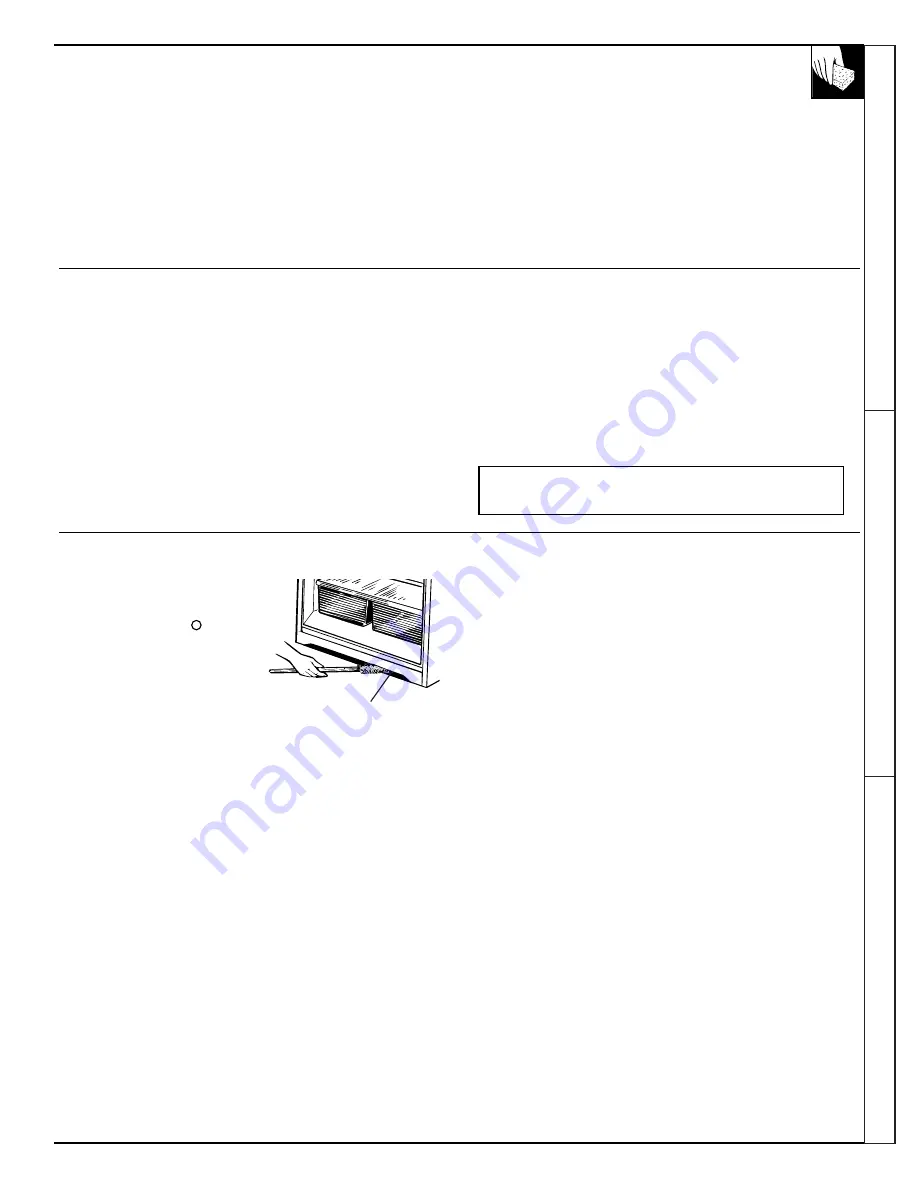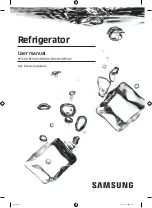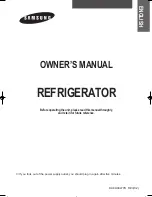
CARE AND CLEANING
Cleaning—Outside
7
The door handles and trim (on some models) can be cleaned with a
cloth dampened with a solution of mild liquid dishwashing detergent
and water. Dry with a soft cloth. Don’t use wax on the door handles
or trim.
Keep the finish clean. Wipe with a clean cloth lightly dampened with
kitchen appliance wax or mild liquid dishwashing detergent. Dry and
polish with a clean, soft cloth.
Do not wipe the refrigerator with a soiled dishwashing cloth or wet
towel. These may leave a residue that can erode the paint. Do not use
scouring pads, powdered cleaners, bleach or cleaners containing
bleach because these products can scratch and weaken the paint finish.
Protect the paint finish. The outside of the refrigerator has a high
quality, baked-on paint finish. With proper care, it will stay new-
looking and rust-free for years. Apply kitchen/appliance wax when
the refrigerator is new and then at least twice a year.
Cleaning—Inside
Clean the inside of the fresh food and frozen food storage
compartments at least once a year. Unplug refrigerator before
cleaning. If this is not practical, wring excess moisture out of sponge
or cloth when cleaning around switches, lights or controls. Apply an
appliance wax/polish to the inside surface between the doors.
Use warm water and baking soda solution—about a tablespoon
(15 ml) of baking soda to a quart (1 L) of water. This both cleans and
neutralizes odors. Rinse thoroughly with water and wipe dry.
Other parts of the refrigerator—including door gaskets, vegetable
drawers, ice trays and all plastic parts—can be cleaned the same way.
After cleaning the door gaskets, apply a thin layer of petroleum jelly
to the door gaskets at the hinge side. This helps keep the gaskets from
sticking and bending out of shape. Do not use cleansing powders or
other abrasive cleaners.
To help prevent odors, leave an open box of baking soda in the rear of
the refrigerator, on the top shelf. Change the box every three months.
An open box of baking soda in the frozen food storage compartment
will absorb stale frozen food storage compartment odors.
Do not wash any of your refrigerator’s plastic parts in your
automatic dishwasher.
Under Refrigerator
Behind Refrigerator
For most efficient operation, you
need to keep the area under the
refrigerator clean. Turn the
temperature control to “
.”
Sweep away or vacuum dust
that is readily accessible on the
condenser coils, then turn the
control back on.
For best results, use a brush
specially designed for this purpose,
available from your local distributor.
This easy cleaning operation should
be done at least once a year.
Care should be taken in moving your refrigerator away from the wall.
All types of floor coverings can be damaged, particularly cushioned
coverings and those with embossed surfaces.
Turn the leveling legs at each front corner of the refrigerator counter-
clockwise until the rollers support the refrigerator; then pull the
refrigerator straight out and return it to position by pushing it straight
in. Moving your refrigerator in a side direction may result in damage
to your floor covering or refrigerator.
After rolling the refrigerator back into place, turn the legs clockwise
until the legs again bear the weight of the refrigerator. Refer to the
Rollers and Leveling Legs section.
(continued next page)
Automatic Icemaker
Accessories
Car
e and Cleaning
Clean the condenser coils
at least once a year.








































